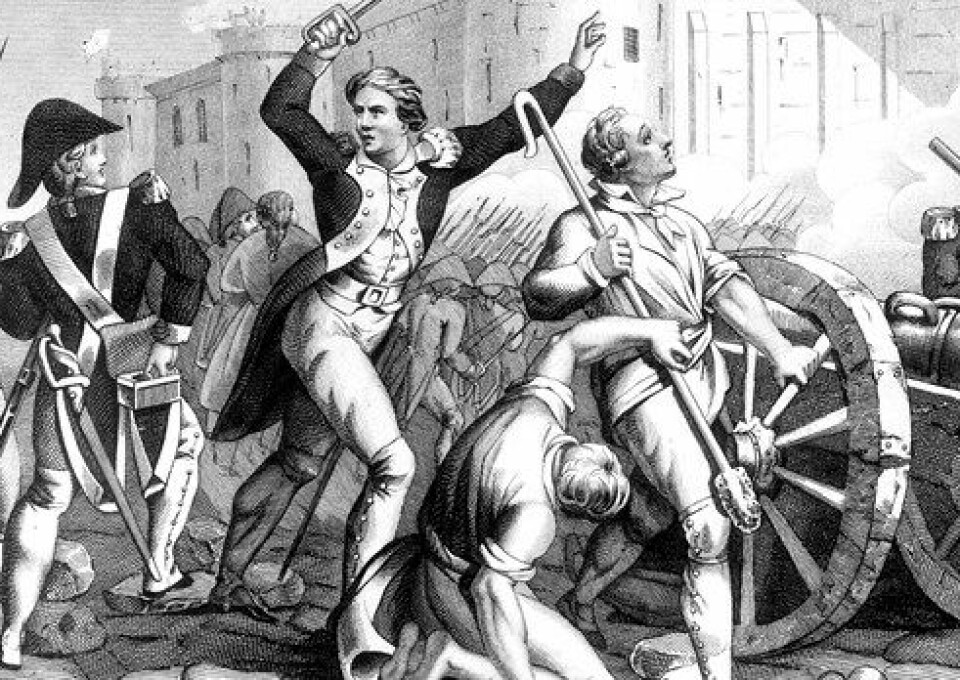Debat
The Learning Pit and Peer Assessment
I like the concept Peer Assessment, because research tells us, that the feedback students give to each has a great effect on their learning and understanding of the concept (Hattie 2013) and because we know, that Peer interaction is the most important factor in the learningcommunity for the students. (Nuthall 2007)
Bemærk
Denne artikel er flyttet fra en tidligere version af folkeskolen.dk, og det kan medføre nogle mangler i bl.a. layout, billeder og billedbeskæring, ligesom det desværre ikke har været teknisk muligt at overføre eventuelle kommentarer under artiklen.
In my work I have found, that it will make sense to combine The Learning Pit, designed and developed by James Nottingham and Challenging Learning with the exiting knowledge about Peer Interaction and Peer Learning which in many ways are congruent concepts and which are the main concepts of my work and my research. In this article I will focus on Peer Assessment, which is a very important part of the concept of Peer Learning, as I also stressed in my last article about Peer Tutoring.
I like the concept Peer Assessment, because research tells us, that the feedback students give to each has a great effect on their learning and understanding of the concept (Hattie 2013) and because we know, that Peer interaction is the most important factor in the learningcommunity for the students. (Nuthall 2007). Peer Assessment is a cooperative activity and the students have to be thoroughly instructed in the process. The feedback they give to each other must - first and foremost – be formative and the way they give one another feedback has to follow a pattern, so that the student who receives feedback feel safe and ready to listen, and so that the student who gives feedback know how to do it so she can focus on the content and the ongoing process. We know that the effect size of feedback on students learning is about 0,73 and that the effect size of providing formative feed back is 0,68. (Hattie 2015). Furthermore we know that the peer interactions means more than anything else for the student in the school. (Hattie 2013)(Nuthall 2007). Therefore there are reason to believe, that the use of Peer assessment have a great effect on student learning.
In this article, I will focus on Peer Assessment and combine this with the Learning Pit, which I think is a very important contribution to the understanding of learning and especially the deeper learning.
Before moving through the Pit, I will mention a central definition of Peer Assessment, which describes the fundament of Peer Assessment
Peer assessment is an arrangement for learners to consider and specify the level, value, or quality of a product or performance of other equal-status learners. Products to be assessed can include writing, oral presentations, portfolios, test performance, or other skilled behaviors. Peer assessment can be summative or formative. In a formative view, the intent is to help students help each other plan their learning, identify their strengths and weaknesses, target areas for remedial action, and develop metacognitive and other personal and professional skills. Peer feedback is available in greater volume and with greater immediacy than teacher feedback. A peer assessor with less skill at assessment but more time in which to do it can produce an assessment of equal reliability and validity to that of a teacher.
Professor Keith J. Topping, University of Dundee.
Now, when we have a definition of Peer Assessment in place we can safely move through the Pit together. This travel makes sense because the Learning Pit is an important description of the learning process.
Concept
The students present their understanding of the concept to each other and then, in a structured process, get a formative feedback on their understanding. This might confirm their starting point or give them cause for reflection. If the received feedback, in this stage of the Learning Pit, gives rise to a discussion this might promote further learning. Classroom discussion, in this case a discussion of the concept between peers in the Pit, has an effect size on student learning on 0,82 (Hattie 2015), which is a pretty high effect. It is important, that the feedback given in this stage of the Learning Pit is formative and positive.
Challenge
In this stage students meets challenges in their understanding of the concept, and the Peer assessment relates – in this stage - to providing feedback on the challenges experienced and what they actually consists of. This may help the student to understand what the challenges he encounters consists of. This is important for the ongoing process and the peer interaction is an important part of this in the form of Peer evaluation and formative Peer feedback, as described.
Cognitive conflicts
In this stage many possibilities pops up, and the student has to choose. It is not easy and the Peer feedback is of great importance. The student can be in doubt and he can have have the feeling of not knowing what direction to go. Maybe he has the felling, that he wants to give up and stop working with the concept. At this stage feedback is an important tool in order to create an overview and in order to maintain the courage.
Construct
In this stage the student begins to construct her understanding of the concept. That might be her own and new understanding, and through Peer feedback it is possible for the student to try out her understanding and to create spaces for thinking and reflection. The Peer feedback is very important in this stage.
Eureka
At this point the student has constructed her understanding of the concept and has achieved new knowledge and new competences and abilities. At this stage Peer feedback will give the student possibility to explain her understanding and make it even stronger through thinking and reflection. Furthermore Peer Assessment might tell the student how she managed her work to understand the concept. Last but not least Peer evaluation will strengthen the students understanding of her way through the Pit. How did she manage? What can be better next time? And what can she do next time she is the assessor on her way through the Pit with a Peer.
Through the process writing this article I have many times thought about, that now I am writing the same as I did in my last article about Peer Tutoring. Especially when I wrote about the way through the Pit. I have thought about that, and it might be true. On the other hand has both articles focus on the Learning Pit and, on the other hand, they both focus on Peer interaction. So a share similarities is natural. However, the big difference is that in one case, Peer Tutoring, focus is on teaching and guidance through a learning process, while in the second case, Peer Assessment, is focus on feedback, Assessment and evaluation of an ongoing process.
I hope you can see the same similarities and differences. If you can I have had success with both articles.
Picture used with approval from James Nottingham, Challenging Learning.



































